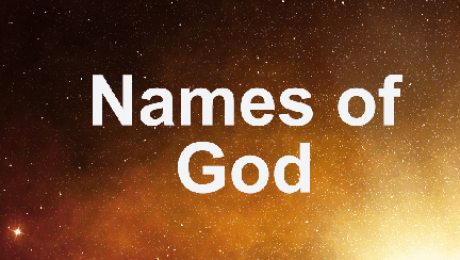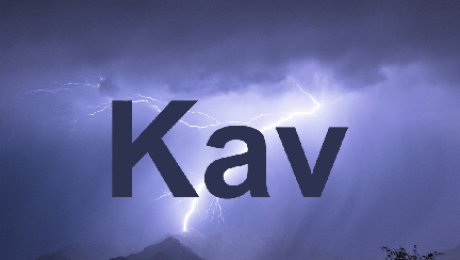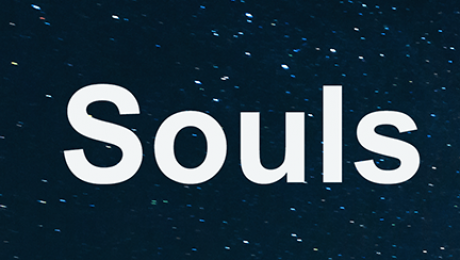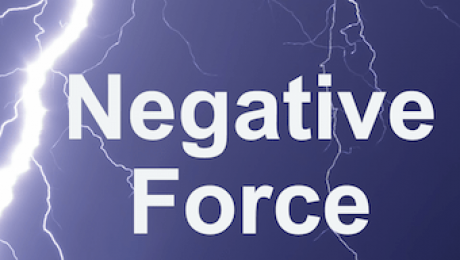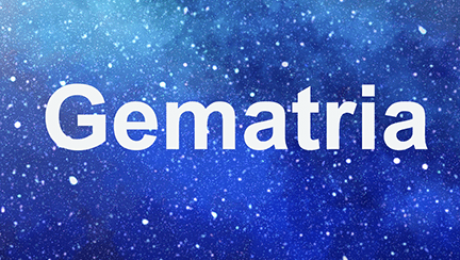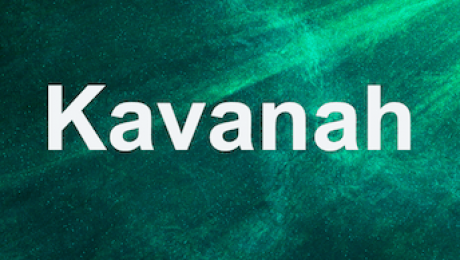Since the goal is to make the upper masculine and feminine energies unite, man has to “resemble” physically the higher masculine configuration, i.e. configuration זעיר אנפין. The Tefilin on the head represent the directive lights he receives from the higher configuration of אימה; the Tefilin on the hand represent the feminine configuration that attaches to his left side. The Talit represents his surrounding lights given also by the configuration אימה.
After configuration זעיר אנפין receives his directive lights from the higher configuration of אימה and they enter his head, they emerge from his forehead toward the outside in four different lights. The Tefilin of the head represent these lights; they comprise four compartments, each one containing a portion of text from the Torah, written on parchment.
Each one of these four lights also brings out an aspect of Levush (garment), which are the four compartments for the Parashiot.
Since the Mo’hin are directive lights that comprise ten Sephirot, the Tefilin are a representation of these ten lights:
The four compartments on the forehead are the Sephirot HBD – חכמה, בינה, דעת (which divides in two).
The two straps on the side of the head are the Sephirot חסד and גבורה.
The knot on the back is Sephira תיפארת.
The two straps that come down on the sides are the Sephirot Netsa’h and הוד: Netsa’h until the chest and הוד until the navel.
The knot that makes the י (Yud) on the Tefilin of the hand is the Sephira יסוד of configuration ז׳א. From there (the arm of ז׳א), the building of the feminine configuration begins.
The Tefilin on the arm represent the feminine configuration Ra’hel. The order of the Parashiot is the same as in the Tefilin on the head, but in only one parchment.
The three wrappings on the biceps correspond to the three first Sephirot of נוקבה. The seven wrappings on the forearm correspond to the seven lower Sephirot.
The three wrappings on the finger correspond to the NHY (נצח, הוד, and יסוד) of ז׳א, which enter inside the נוקבה to be its Mo’hin – directive lights.
Since configuration ז׳א receives two types of directive lights, one from the configuration אבה, and one from the configuration אימה, there are two types of Tefilin:
- Tefilin of אימה are called Tefilin of Rashi. They are the regular type worn by all
- Tefilin of אבה are called Tefilin of Rabenu Tam. They are worn by only a few, together or after the ones of Rashi
The difference is in the order of the writing of the four Torah portions – Parashiot.
As we can see, every element of the prayers, whether physical or spiritual, has very deep and essential meanings to give important forces and power to the one praying. It is a pity that these powerful and beautiful rituals are taken mistakenly for “folkloric recitations” in an incomprehensible language, part of “one has to do” type of thing when attending a prayer in a synagogue.
By making the effort to understand the deeper meanings of these rituals, one will discover a whole new definition and reason for his special relationship with the higher worlds and his Creator
The main names are:
- Y-H-V-H – י-ה-ו-ה
- Ein Sof – אין סוף
- Adona-y – אדנ- י
- Ahy-h – אהי-ה
- Elohi-M – אלוה-ים
Ein Sof– אין סוף
Ein Sof – The without limit or Infinite, is the most used Name for G-od in the Kabbalah. Since His light or energy cannot be measured by any definition or limiting terms, we therefore use the name “Ein Sof” (without limit) since we know and admit that G-od and the concept of limitlessness or without end is beyond our human comprehension. This name represents kindness.
Adona-y – אדנ- י
This name represents the feminine aspect of G-od; it has an aspect of rigor and is represented by the Sephira מלכות. It also represents the feminine configurations of Ra’hel and Leah. Since men’s prayers are first directed to the Sephira מלכות before they can be transmitted higher, this name also represents the closest relationship between man and his Creator.
Ahy-h – אהי-ה
This name represents the higher masculine aspect of G-od, and is represented by the Sephira כתר. It shows kindness together with the awe of G-od.
Elohi-M – אלוה-ים
One of the names of G-od, represented by the Sephira גבורה. In general, it denotes rigor in the actions of G-od.
Y-H-V-H (ה–ו–ה–י)
The primary name of G-od reveals kindness and mercy, represented by the Sephira תיפארת. All that was created has its origin in these four letters. Most of the guidance is manifested by this name and its different spellings that make new individual names.
By spelling each one of the four letters of this name differently, the numerical value of the name changes, and each one of these possibilities becomes different in its nature and actions.
| בן | BaN | 52 |
| מה | MaH | 45 |
| סג | SaG | 63 |
| עב | A”V | 72 |
The four Miluyim (spellings) are:
| ה | ו | ה | י | ||||
| עב | הי | ויו | הי | יוד | |||
| 15 | 22 | 15 | 20 | = | 72 | ||
| סג | הי | ואו | הי | יוד | |||
| 15 | 13 | 15 | 20 | = | 63 | ||
| מה | הא | ואו | הא | יוד | |||
| 6 | 13 | 6 | 20 | = | 45 | ||
| בן | הה | וו | הה | יוד | |||
| 10 | 12 | 10 | 20 | = | 52 |
Each name can also be divided and subdivided to describe even more precisely the different outcomes and manifestations of these energies:
‘A”V of ‘A”V, SaG of ‘A”V, MaH of ‘A”V …
BaN of BaN of SaG, SaG of MaH of ‘A”V etc.
The lights or forces that are clothed in these letters or their combinations emanate masculine or feminine configurations that make the guidance of the worlds.
Tsimtsum
The “Tsimtsum” is the first act of Ein Sof (Infinite) in the creation. It is the retraction of His light from a certain space and encircling it, so as to reduce its intensity and allow created beings to exist. After this contraction, a ray of His light entered this empty space and formed the first Sephirot.
By these boundaries, He revealed the concepts of rigor and limit needed by the created beings, and gave a space for all the created to exist.
‘Hallal – vacant space
After the Tsimtsum (retraction) of His light, an empty space called ‘Hallal was left in the center of this new creation – a space without His full presence. This space is circular and contains all possibilities of existence for separated entities given that they are now distanced from the intensity of His light.
Reshimu – imprint
When His light retracted to form this round space, a trace of it called Reshimu – imprint remained inside. This lower intensity light allowed a space of existence (Makom) for all the created worlds and beings.
The roots of all future existence and events are in the Reshimu. Nothing can come into existence without having its root in this imprint.
The combination of the Reshimu – imprint of the original light and the Kav – ray of His direct light, will be the origin of all future worlds and existence.
About Kabbalah
The Kabbalah is the mystical and esoteric explanation of the Torah. It teaches the unfolding of the worlds, the will of the Creator, the various ways of guidance of these worlds, the role of man in the creation, and more. No other writings explain in details; the creation of this world and the ones above it, the energies that influence its guidance, nor the final goal of everything. These writings are based on ancient Jewish texts and mostly on the Zohar.
The Kabbalah teaches us that the world is guided by an extremely complex system of forces or energies, which through their interactions provoke chain reactions that impact directly on man and the worlds. Each one of these reactions has numerous ramifications, with many details and results. It explains to us the true guidance of the world, so that we may understand the will of God. How and why He created the world, in what way He governs it, the provenance of the souls and angels, the reasons for the dualism of reward and punishment, etc.
The word Kabbalah comes from the verb Lekabel (to receive), but to receive it is first necessary to want, and to become a Keli(recipient) able to receive and contain this knowledge. The Kabbalah also demonstrates to us the importance of man, because only he, by getting closer to the Creator, can influence these incredible forces. For this, one has to elevate to a higher dimension of understanding, and start asking himself some very important questions like; “Why”, “What is the purpose of doing this act or this prayer”, “What are the outcomes of my actions” etc.
The other writings explain in the least details “how” to do, but only the Zohar and the Kabbalah explain to us the exact reasons, and effects of all our prayers and actions.
I believe that most yearn to serve at their best the Creator, but have been accustomed to execute and not seek further, or were kept away from this knowledge. It is now the time to know and learn this magnificent science, as it is written and recommended:
“From there, you shall seek the Lord your G-od, and you shall find him if you seek him with all your heart, and with all your soul.” (Devarim 4,29)
“The one, who was able to learn the secrets of the Torah (Kabbalah) and did not make an effort to understand them, will be severely judged”(Even Shelomo 85, 24). – HaGra, HaGaon Rabbi Eliyahu de Vilna
All the souls in this present world, that will make the effort to know their Creator through His secret writings (Kabbalah), will ascend higher than all the other souls that did not learn and understand, and will be first at the time of the resurrection. (Zohar, Vayeshev, 182, 2)
The man who learns Kabbalah is above all the others. (Zohar, Shemini, 42,)
The one that learns Kabbalah to understand the secrets of the Torah, and the purpose of the Mitsvot according to the Sod (secret), is called a “Son” of the Lord.(Zohar, Vayera)
And finally, the very clear obligation in the Torah “To know, now”, and not just believe:
“וידעת היום והשבת אל-לבבך כי יהו-ה הוא האלה-ים בשמים ממעל ועל-הארץ מתחת אין עוד”
“Know, today, and consider it in your heart, that the Lord is G-od in heaven above and upon the earth beneath, and there is no other.” (Devarim, 4.39)
The Kabbalah teaches us that the world is guided by an extremely complex system of forces or energies, which through their interactions provoke chain reactions that impact directly on man and the worlds. Each one of these reactions has numerous ramifications, with many details and results. It explains to us the true guidance of the world, so that we may understand the will of God. How and why He created the world, in what way He governs it, the provenance of the souls and angels, the reasons for the dualism of reward and punishment, etc.
The word Kabbalah comes from the verb Lekabel (to receive), but to receive it is first necessary to want, and to become a Keli (recipient) able to receive and contain this knowledge. The Kabbalah also demonstrates to us the importance of man, because only he, by getting closer to the Creator, can influence these incredible forces. For this, one has to elevate to a higher dimension of understanding, and start asking himself some very important questions like; “Why”, “What is the purpose of doing this act or this prayer”, “What are the outcomes of my actions” etc.
The other writings explain in the least details “how” to do, but only the Zohar and the Kabbalah explain to us the exact reasons, and effects of all our prayers and actions.
I believe that most yearn to serve at their best the Creator, but have been accustomed to execute and not seek further, or were kept away from this knowledge. It is now the time to know and learn this magnificent science, as it is written and recommended:
“From there, you shall seek the Lord your G-od, and you shall find him if you seek him with all your heart, and with all your soul.” (Devarim 4,29)
“The one, who was able to learn the secrets of the Torah (Kabbalah) and did not make an effort to understand them, will be severely judged”(Even Shelomo 85, 24). – HaGra, HaGaon Rabbi Eliyahu de Vilna
All the souls in this present world, that will make the effort to know their Creator through His secret writings (Kabbalah), will ascend higher than all the other souls that did not learn and understand, and will be first at the time of the resurrection. (Zohar, Vayeshev, 182, 2)
The man who learns Kabbalah is above all the others. (Zohar, Shemini, 42,)
The one that learns Kabbalah to understand the secrets of the Torah, and the purpose of the Mitsvot according to the Sod (secret), is called a “Son” of the Lord.(Zohar, Vayera)
And finally, the very clear obligation in the Torah “To know, now”, and not just believe:
“וידעת היום והשבת אל-לבבך כי יהו-ה הוא האלה-ים בשמים ממעל ועל-הארץ מתחת אין עוד”
“Know, today, and consider it in your heart, that the Lord is G-od in heaven above and upon the earth beneath, and there is no other.” (Devarim, 4.39)
The Mo’hin are the directive force given to a configuration by one or two superior configurations. Depending on the state of growth, there are Mo’hin of Katnut – infancy – and of Gadlut – growth. There are also Mo’hin that enter the lower configuration – interior, and Mo’hin that encircle him – exterior. These directive forces vary in strength and intensities.
During gestation, the directive force are at the lowest level and are called NHY (נצח, הוד, יסוד) of the Mo’hin; they are of the aspect of נפש.
During the suckling, the lights grow and the directive force are at a higher level; they are called HGT (חסד, גבורה, תיפארת) of the Mo’hin and are of the aspect of רוח.
During growth, the directive forces are now fully developed to guide with the full force of HBD (חכמה, בינה, דעת); they are of the aspect of נשמה.
Two distinct Mo’hin come to ז׳א: directive forces of אימה arrive first, and then the directive forces of אבה, second. The directive forces that are given from אבה and from אימה to ז׳א, are called his Tselem (צלמ) and do not completely enter into him
The ones that enter inside the lower configuration – interior, are the three Sephirot NHY (נצח, הוד, יסוד) of the superior configuration, they divide in three and are now composed of nine parts and correspond to the צ. They spread into the nine Sephirot of ז׳א.
The ones that do not enter are HBD, HGT of the higher configuration. They do not enter inside the lower configuration, but rather encircle him on the outside in the three-column arrangement of kindness, rigor and mercy. The encircling Mo’hin are of a higher aspect than the interior Mo’hin and correspond to the למ of the complete Mo’hin -צלמ
The HGT (חסד, גבורה, תיפארת) that surround him correspond to the ל
The KHBD (כתר, חכמה, בינה, דעת) that encircle him correspond to the מ
Before reaching its full force, ז׳א goes through three prepatory states. First, from his original six Sephirot (infancy 1) he will get his higher four Sephirot which are his directive force, from ISOT 2 (growth 1). When these directive forces exit[3] it is infancy 2, when they come back to him through ISOT 1 (אבה and אימה), he has reached his full growth (growth 2).
Therefore, for the two infancies and two growths of configuration ז׳א, there are directive forces corresponding to each one of these different states of growth.
Directive forces of infancy
There are two types of directive forces of infancy: Katnut (infancy) 1 and Katnut 2.
When configuration ז׳א only receives the NHY (נצח, הוד, and יסוד) of his Mo’hin – interior – but not the encircling, they are the directive forces of Katnut 1.
When he receives the NHY (נצח, הוד, and יסוד) of his directive forces directly from אימה, they are the directive forces of Katnut 2.
Directive forces of growth
There are two types of directive forces of Gadlut (growth): Gadlut 1 and Gadlut 2.
When configuration ז׳א receives all his directive forces – interior and encircling from ISOT, they are directive forces of Gadlut 1. When he receives all his directive forces directly from אימה, they are directive forces of Gadlut 2, and he has now attained his full maturity.
The Kabbalah is the mystical and esoteric explanation of the Torah. It teaches the unfolding of the worlds, the will of the Creator, the various ways of guidance of these worlds, the role of man in the creation, and more. No other writings explain in details; the creation of this world and the ones above it, the energies that influence its guidance, nor the final goal of everything. These writings are based on ancient Jewish texts and mostly on the Zohar.
The Kabbalah teaches us that the world is guided by an extremely complex system of forces or energies, which through their interactions provoke chain reactions that impact directly on man and the worlds. Each one of these reactions has numerous ramifications, with many details and results. It explains to us the true guidance of the world, so that we may understand the will of God. How and why He created the world, in what way He governs it, the provenance of the souls and angels, the reasons for the dualism of reward and punishment, etc.
The word Kabbalah comes from the verb Lekabel (to receive), but to receive it is first necessary to want, and to become a Keli (recipient) able to receive and contain this knowledge. The Kabbalah also demonstrates to us the importance of man, because only he, by getting closer to the Creator, can influence these incredible forces. For this, one has to elevate to a higher dimension of understanding, and start asking himself some very important questions like; “Why”, “What is the purpose of doing this act or this prayer”, “What are the outcomes of my actions” etc.
The other writings explain in the least details “how” to do, but only the Zohar and the Kabbalah explain to us the exact reasons, and effects of all our prayers and actions.
I believe that most yearn to serve at their best the Creator, but have been accustomed to execute and not seek further, or were kept away from this knowledge. It is now the time to know and learn this magnificent science, as it is written and recommended:
“From there, you shall seek the Lord your G-od, and you shall find him if you seek him with all your heart, and with all your soul.” (Devarim 4,29)
“The one, who was able to learn the secrets of the Torah (Kabbalah) and did not make an effort to understand them, will be severely judged”(Even Shelomo 85, 24). – HaGra, HaGaon Rabbi Eliyahu de Vilna
All the souls in this present world, that will make the effort to know their Creator through His secret writings (Kabbalah), will ascend higher than all the other souls that did not learn and understand, and will be first at the time of the resurrection. (Zohar, Vayeshev, 182, 2)
The man who learns Kabbalah is above all the others. (Zohar, Shemini, 42,)
The one that learns Kabbalah to understand the secrets of the Torah, and the purpose of the Mitsvot according to the Sod (secret), is called a “Son” of the Lord.(Zohar, Vayera)
And finally, the very clear obligation in the Torah “To know, now”, and not just believe:
“וידעת היום והשבת אל-לבבך כי יהו-ה הוא האלה-ים בשמים ממעל ועל-הארץ מתחת אין עוד”
“Know, today, and consider it in your heart, that the Lord is G-od in heaven above and upon the earth beneath, and there is no other.” (Devarim, 4.39)
Since the goal is to make the upper masculine and feminine energies unite, man has to “resemble” physically the higher masculine configuration, i.e. configuration זעיר אנפין. The Tefilin on the head represent the directive lights he receives from the higher configuration of אימה; the Tefilin on the hand represent the feminine configuration that attaches to his left side. The Talit represents his surrounding lights given also by the configuration אימה.
After configuration זעיר אנפין receives his directive lights from the higher configuration of אימה and they enter his head, they emerge from his forehead toward the outside in four different lights. The Tefilin of the head represent these lights; they comprise four compartments, each one containing a portion of text from the Torah, written on parchment.
Each one of these four lights also brings out an aspect of Levush (garment), which are the four compartments for the Parashiot.
Since the Mo’hin are directive lights that comprise ten Sephirot, the Tefilin are a representation of these ten lights:
The four compartments on the forehead are the Sephirot HBD – חכמה, בינה, דעת (which divides in two).
The two straps on the side of the head are the Sephirot חסד and גבורה.
The knot on the back is Sephira תיפארת.
The two straps that come down on the sides are the Sephirot Netsa’h and הוד: Netsa’h until the chest and הוד until the navel.
The knot that makes the י (Yud) on the Tefilin of the hand is the Sephira יסוד of configuration ז׳א. From there (the arm of ז׳א), the building of the feminine configuration begins.
The Tefilin on the arm represent the feminine configuration Ra’hel. The order of the Parashiot is the same as in the Tefilin on the head, but in only one parchment.
The three wrappings on the biceps correspond to the three first Sephirot of נוקבה. The seven wrappings on the forearm correspond to the seven lower Sephirot.
The three wrappings on the finger correspond to the NHY (נצח, הוד, and יסוד) of ז׳א, which enter inside the נוקבה to be its Mo’hin – directive lights.
Since configuration ז׳א receives two types of directive lights, one from the configuration אבה, and one from the configuration אימה, there are two types of Tefilin:
- Tefilin of אימה are called Tefilin of Rashi. They are the regular type worn by all
- Tefilin of אבה are called Tefilin of Rabenu Tam. They are worn by only a few, together or after the ones of Rashi
The difference is in the order of the writing of the four Torah portions – Parashiot.
As we can see, every element of the prayers, whether physical or spiritual, has very deep and essential meanings to give important forces and power to the one praying. It is a pity that these powerful and beautiful rituals are taken mistakenly for “folkloric recitations” in an incomprehensible language, part of “one has to do” type of thing when attending a prayer in a synagogue.
By making the effort to understand the deeper meanings of these rituals, one will discover a whole new definition and reason for his special relationship with the higher worlds and his Creator
The soul has five levels, their names are: Nefesh, Rua’h, Neshama, ‘Haya and Ye’hida. The soul is the spiritual entity inside the body, the latter being only its outer garment. Each soul has a precise root and a possibility of acquiring the highest level of this root. All come first with a lower level, and will, if they merit, attain the next higher level.
Nefesh
The first and lower level. It is acquired at birth and before the succeeding levels. It corresponds to the level of the physical world of ‘Asiah and of the feminine configuration Nukva.
Rua’h
The second level and is acquired before the succeeding levels. It corresponds to the level of the world of angels – Yetsirah and configuration Zeir Anpin.
Neshama
The third level and can be acquired only after acquiring the level of Nefesh and Rua’h. It corresponds to the level of the world of souls – Beriah and configuration Imah.
‘Haya
The fourth level and can only be acquired after the preceding levels. It corresponds to the level of the world of emanation – Atsilut and configuration Abah.
Ye’hida
The fifth and highest level; it is very rarely attained and can only be acquired after the Tikun (rectification) of all the preceding levels. It corresponds to the level of the world of emanation – Atsilut and configuration Arikh Anpin.
Correspondence between the five levels of souls, four worlds and five configurations
| Soul | World | Configuration |
| Ye’hida | Atsilut | Arikh Anpin |
| Hayah | Atsilut | Abah |
| Neshama | Beriah | Imah |
| Rua’h | Yetsirah | Zeir Anpin |
| Nefesh | ‘Asiah | Nukva |
There are many divisions and categories of souls. They differ according to their origin or their level in the higher realms.
Each level of the soul is subdivided in five levels. As for the level of Nefesh, there are Nefesh of Nefesh, Rua’h of Nefesh, Neshama of Nefesh, ‘Haya of Nefesh and Ye’hida of Nefesh.
Each level of the soul has its own five levels
| Nefesh | Rua’h | Neshama | ‘Haya | Ye’hida |
| Ye’hida | Ye’hida | Ye’hida | Ye’hida | Ye’hida |
| ‘Haya | ‘Haya | ‘Haya | ‘Haya | ‘Haya (2) |
| Neshama | Neshama | Neshama | Neshama | Neshama |
| Rua’h | Rua’h | Rua’h | Rua’h | Rua’h |
| Nefesh (1) | Nefesh | Nefesh | Nefesh | Nefesh |
(1) Nefesh of Nefesh is the lowest level for a soul
(2) ‘Haya of Ye’hida is almost the highest
Each level of Nefesh subdivides again
| Level | Nefesh | Rua’h | Neshama | ‘Haya | Ye’hida |
| Nefesh | Ye’hida | Ye’hida | Ye’hida | Ye’hida | Ye’hida |
| Nefesh | ‘Haya | ‘Haya (1) | ‘Haya | ‘Haya | ‘Haya |
| Nefesh | Neshama | Neshama | Neshama | Neshama | Neshama (3) |
| Nefesh | Rua’h (2) | Rua’h | Rua’h | Rua’h | Rua’h |
| Nefesh | Nefesh | Nefesh | Nefesh | Nefesh | Nefesh |
Each level can again be subdivided, for example:
(1) ‘Haya of Rua’h of Nefesh is a higher level than
(2) Rua’h of Nefesh of Nefesh but lower than
(3) Neshama of Ye’hida of Nefesh
Each soul has its origin in the different worlds and configurations. The quality of the soul will depend on which configuration and from which world it has its root. A soul with a higher origin will be of superior quality and will have a better potential for understanding and approaching nearer to its Creator, on the condition, of course, that it acts accordingly and reaches its potential.
Each one of these levels of the soul subdivides for each level of Partsuf – configuration and for each world. Therefore, there are five levels of soul for each configuration and there are five levels of configurations for each world, etc. Each one of these levels can again subdivide in many, adding numerous possibilities.
The goal of man is to reach each successively higher level of his soul; for that, he must perform the Tikun of the preceding levels. The higher levels of the soul cannot be acquired at once. Most men only have the level of נפש, and if they merit, they will acquire the succeeding levels – but one by one by dying and reincarnating. If he needs to acquire the level of אימה of עשיה, first, he must perform the Tikun of מלכות of עשיה, ז׳א of עשיה, and so on. To acquire his level of נשמה, he must perform the Tikun of all the levels of the Sephirot and configurations of his נפש and רוח, etc.
To do this Tikun could take a few lifetimes, the soul will then reincarnate as many times as needed to accomplish it.
All these complex possibilities have only one purpose; to allow man to have merit by his own efforts and get closer to his Creator. For this, he must get a higher level of soul and elevate his ways by doing his own Tikun.
There is a “second” authority called Sitra A’hra – negative force or “evil”. Even though it is the opposite of everything good, it is important to understand that the origin of “evil” is from an emanation of the superior lights, and thus, it does not really have a complete independent authority. It nourishes itself from the lower extremities of the holiness, and needs permission to act from above.
There is really only one unique and full authority, and it is the one of the Creator.
At the creation, when the ten feminine Sephirot of the aspect of the name of BaN (52) came out from the eyes of Adam Kadmon, the first three Sephirot – KHB (Keter, ‘Hokhma, Binah) – were able to stand in the three column arrangement. However, the seven lower Sephirot did not stand in this order; they were not able to retain their lights and consequently broke. This was the first imperfection or damage in the creation. It is only when there are three columns, where the one of mercy stands between the columns of kindness and rigor that the three can attach and bind together for a harmonious balance.
This imperfect arrangement is the first origin of the negative force or “evil”. This type of existence could not come to be from a perfect source; it had to originate from a defective state.
The breaking of the seven lower Sephirot caused a descent of all the worlds. The world of ‘Asiah fell even lower and from its end, the negative force emerged.
The Sephirot have their root in the holiness of the Ein Sof, B’H. The root of the negative force is in the lack or absence of the holiness. These husks obstruct the lights of the Sephirot, concealing man from his root and from the light.
In parallel (opposite) to the four worlds, this negative entity has its own four worlds, where ten groups of negative angels divide as follows:
- three groups in their world of Beriah
- six groups in their world of Yetsirah
- one group in their world of ‘Asiah.
They nourish from the extremities of the higher lights when the latter are weakened by the bad deeds of the lower beings. When this negative force receives its strength by sucking on these higher lights, its destructive angels get more powers and come to do evil in the world.
The existence of the Sitra A’hra – negative force – was willed by the Creator to give man free will. With falsehood, it almost constantly tries to seduce him, and make him stumble.
The good deeds of man have an effect on the four higher worlds, his bad deeds on the four lower worlds. It is only when man sins that the negative side can grow in strength.
When man acts negatively, he attracts a derivative of this negative force that grows inside him. This is his Yetser Hara’; it cuts him off from the higher worlds and the holiness. When he acts positively, he attracts positive energies that weaken the negative energies inside of him and give him strength to come closer to its creator.
Husks – Klipot
The husks are the individual manifestations of the negative force. They obstruct the lights of the lower Sephirot by attaching and nurturing from their extremities. They conceal man from the truth and from the light. Because of the bad deeds of the lower beings, the husks get and renew their strength to do evil in the world.
The Tikunim (rectifications) of the lower beings consist in detaching these husks from the holiness, by accomplishing the commandments and by the prayers. When men act negatively, they produce contrary energies that cause deteriorations that reach the lower worlds and create even more husks to do harm.
There are four main levels of husks, they correspond to the four lower worlds. They too comprise Sephirot and configurations as in the positive worlds, and are also built on the three column arrangement of the Sephirotic trees. But they have the aim of acting contrary to the above positive worlds by emanating negative and hurtful energies.
There are different systems of interpretation of the hidden meanings of the Torah. One of them is the Gematria, where the mathematical values of each letter or word are calculated. Each letter having its own numerical value, the fact that some words have the same total is not just coincidence, but denotes a similarity or complementarity.
It is one of the different systems of interpretation of the hidden meanings of the Torah, where mathematical values of letters, words, and sentences are calculated to find a similarity or complementarity. Each letter has its own numerical value.
| Letter | Name | Value |
| א | Aleph | 1 |
| ב | Beit | 2 |
| ג | Gimel | 3 |
| ד | Dalet | 4 |
| ה | He | 5 |
| ו | Vav | 6 |
| ז | Zain | 7 |
| ח | ‘het | 8 |
| ט | Tet | 9 |
| י | Yud | 10 |
| כ | Khaf | 20 |
| ל | Lamed | 30 |
| מ | Mem | 40 |
| נ | Nun | 50 |
| ס | Samekh | 60 |
| ע | ‘ain | 70 |
| פ | Pey | 80 |
| צ | Tsadey | 90 |
| ק | Kuf | 100 |
| ר | Resh | 200 |
| ש | Shin | 300 |
| ת | Tav | 400 |
The final letters also have their own numerical values:
| Letter | Name | Value |
| ך | Final Khaf | 500 |
| ם | Final Mem | 600 |
| ן | Final Nun | 700 |
| ף | Final Pey | 800 |
| ץ | Final Tsadey | 900 |
There are seven main types of Gematriot:
- Ragil – regular
- Katan – small value
- HaKlali – value squared
- Kolel – regular plus a value for one or all the letters
- HaKadmi – regular plus the value of the preceding letters
- HaPerati – each letter squared
- Miluy- sum of the spellings
1 – Ragil: the numbers of the letters are as follows:
| From | To | Value |
| א | ט | 1 – 9 |
| י | צ | 10 -90 |
| ק | ת | 100 – 400 |
| ך | ץ | 500 -900 |
Ex : הארץ = 1106
2 – Katan: tens and hundreds are reduced to one digit.
| From | To | Value |
| א | ט | 1 – 9 |
| י | צ | 1 – 9 |
| ק | ת | 1 – 4 |
| ך | ץ | 5 -9 |
Ex : הארץ = 17
3 – HaKlali: the Ragil value of the word squared.
Ex : הארץ = 1106 * 1106 = 1 223 236
4 – Kolel: the Ragil value of the word + the numbers of letters, or + 1 for the word.
Ex : הארץ = 1106 + 4 = 1110
or 1106 + 1 = 1107
5 – HaKadmi: each letter has its Ragil value plus the total of all the ones preceding it.
| From | To | Value |
| א | ט | 1 – 45 |
| י | צ | 55 – 495 |
| ק | ת | 595 –1495 |
| ך | ץ | 1995 – 4995 |
Ex : הארץ = 15+1+795+4995 = 5806
6 – HaPerati: each letter is squared.
Ex : הארץ = 5 * 5 = 25, 1 * 1 = 1
200 * 200 = 40 000, 900 * 900 = 810 000 Total = 850 026
7 – Miluy: the sum of the spelling of each letter.
| Letter | Miluy | Value |
| ה | הא | 6 |
| א | אלף | 111 |
| ר | ריש | 510 |
| ץ | צדי | 104 |
Ex : הארץ = 731
By the Gematriot, we see that each letter and word has a dynamic meaning beyond the simple definitions. Gematria is only one of the secret ways of interpreting the hidden meanings in the Torah.
There are also permutation systems where letters are replaced by others in a set order as “ATBaSH” where the first letter is replaced by the last, the second by the one before the last etc. “Notrikun”, where initials of different words make a new word, and many other systems.
To reach a more active role in the unification of the different configurations, one needs to understand and concentrate when praying. There are different levels of Kavanah – concentration. The basic Kavanah is to understand the words, and concentrate on the intention of the blessing or the prayer. The higher level is to meditate on the different systems of permutation of names and configurations, to get a particular action or result. Each word or part of the prayers has its own action or purpose. These actions are initiated by concentrating on the different names of G-od, their appellations and other arrangements of the Autiot – letters.
When saying a blessing with the Kabbalistic meditation on the appropriate words or names, we act and participate directly on the Tikun – rectification of the action or thing being blessed. The purpose of most of the blessings recited before and after eating or drinking is to liberate the souls that have been reincarnated in these comestible elements.
When praying, it is important to be part of a Minyan – a group with a minimum of ten men. Without this minimum number, the Kadish and other important parts of the prayer cannot be recited. For the morning prayer, one also has to wear a Talit – praying shawl, and Tefilin – phylacteries wrapped on the head and left arm.
As we can see, every element of the prayers, whether physical or spiritual, has very deep and essential meanings to give important forces and power to the one praying. It is a pity that these powerful and beautiful rituals are taken mistakenly for “folkloric recitations” in an incomprehensible language, part of “one has to do” type of thing when attending a prayer in a synagogue.
By making the effort to understand the deeper meanings of these rituals, one will discover a whole new definition and reason for his special relationship with the higher worlds and his Creator
- 1
- 2

